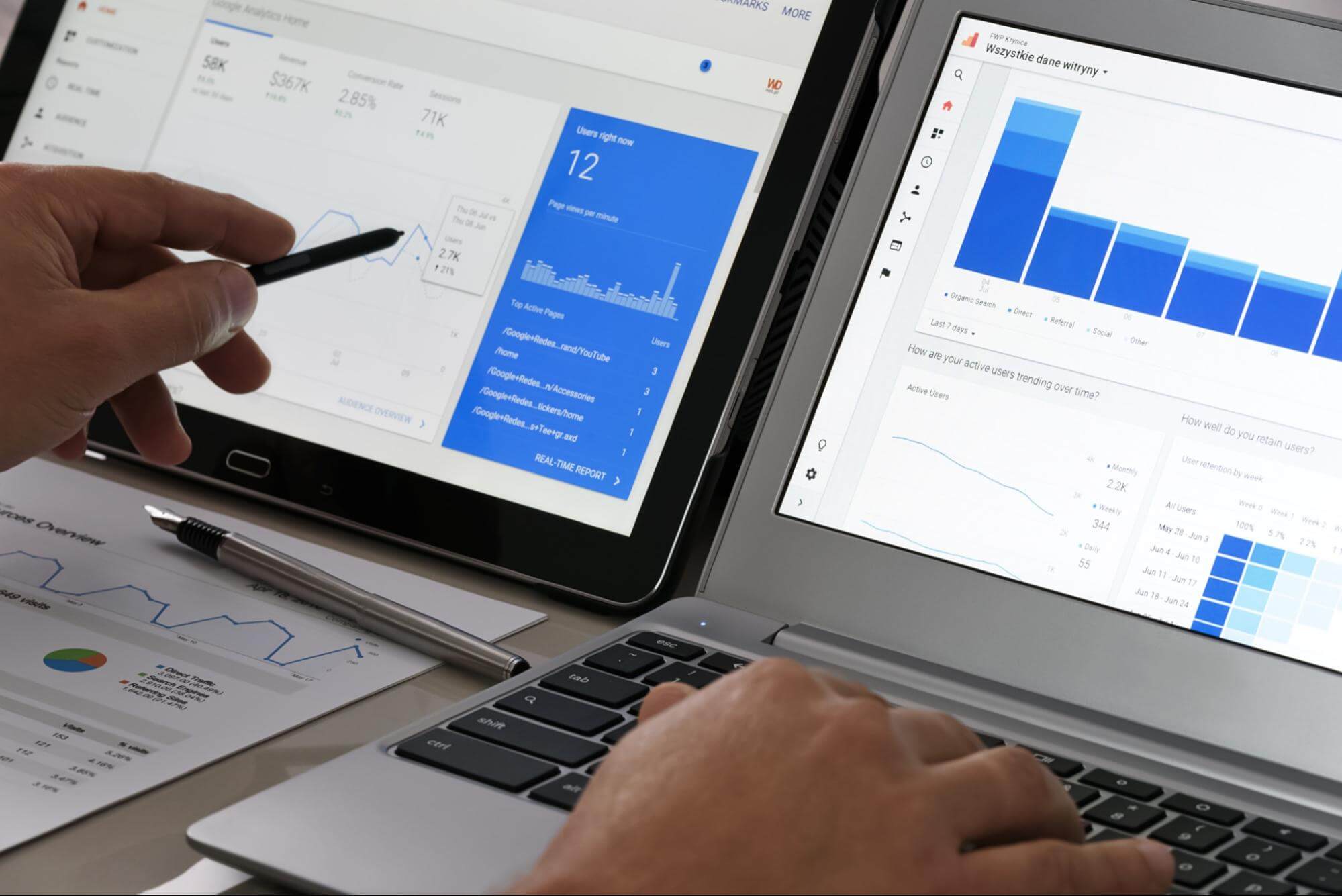Google Dynamic Search Ads (DSA): Everything You Need to Know
How Google Dynamic Search Ads Work
What Are Dynamic Search Ads (DSAs)?
When I first stumbled upon Dynamic Search Ads, I must admit I was skeptical. How could a machine understand my business better than I do? But curiosity got the better of me, and I decided to dive headfirst into this digital rabbit hole.
The Dynamic Crawling Journey
DSAs start by crawling and indexing the content of your website, just like search engines do. It’s like sending a team of robotic spiders to explore your digital domain, mapping every nook and cranny. This process allows DSAs to understand the structure and substance of your website, capturing keywords and phrases that will later be used to generate relevant ads.
The Art of Ad Generation
Once the crawling journey is complete, the magic begins. DSAs take the keywords and phrases they’ve gathered and start concocting ads on the fly. It’s like having a team of advertising wizards who whip up personalized ad headlines and landing pages in an instant. These dynamic ads are tailor-made to match the search queries of potential customers, ensuring that your business appears in front of the right audience at the right time.
Ad Relevance in Action
One of the most remarkable aspects of DSAs is their ability to adapt and evolve. As search trends change and new keywords emerge, DSAs dynamically update your ads, keeping them relevant and effective. It’s like having a chameleon-like advertising assistant that blends seamlessly with the digital environment, always staying one step ahead of the competition.
Balancing DSAs with Human Expertise for Success
While DSAs work their magic, it’s important to remember that human input is still crucial for success. Here are some best practices that can help you make the most of DSAs:
- Keyword Research: While DSAs do the heavy lifting, conducting keyword research can supplement their performance. Identify high-volume keywords related to your business to ensure your ads reach a wider audience.
- Negative Keywords: Just like a good magician, DSAs need clear instructions. Implementing negative keywords can help you exclude irrelevant searches and ensure your ads are shown to the most relevant audience.
- Optimization is Key: DSAs thrive on well-optimized ad text and landing page content. Craft compelling copy that aligns with your brand’s voice and engages your potential customers. Remember, the goal is not just to attract clicks but to convert those clicks into meaningful actions.
Benefits of Dynamic Search Ads in Your DSA Campaign

Boost Your Reach and Coverage
The first breathtaking benefit of DSAs is their ability to expand your reach like never before. With traditional keyword-based campaigns, you may miss out on valuable opportunities simply because you haven’t included every possible search term in your strategy. But fear not! DSAs analyze the content of your website and dynamically generate relevant ads based on user search queries. This means your business will be seen by a wider audience, increasing your chances of capturing potential customers who may have slipped through the cracks and enhancing your SEO visibility in the process.
Embrace Time-Saving Automation
Bid farewell to the days of tirelessly managing individual campaigns. DSAs are the epitome of efficiency, saving you precious time and resources. By automatically generating ads and dynamically updating them based on real-time search trends, DSAs eliminate the need for constant manual adjustments. This newfound automation empowers you to focus on other critical aspects of your business while the dynamic ads work their magic, driving targeted traffic to your website.
Unleash the Power of Ad Relevance
In the ever-evolving world of online advertising, relevance is the key that unlocks success. DSAs excel at creating ads that align perfectly with user search queries. By dynamically generating headlines and landing pages, DSAs ensure that your ads are highly relevant to the specific needs and interests of your target audience. This laser-focused relevance not only boosts the effectiveness of your ads but also enhances the user experience, increasing the likelihood of conversions.
Harness the Power of Keyword Supplementation
While DSAs are masters at adapting to search queries, you can further amplify their impact by supplementing them with strategic keyword research. By identifying high-volume keywords related to your business, you can fine-tune your DSA strategy and uncover new opportunities for growth. Think of it as a dynamic duo, where the intelligent automation of DSAs combines forces with your human insights, creating a formidable marketing force.
Revel in Real-Time Performance Analysis
Gone are the days of waiting anxiously for campaign reports to trickle in. DSAs provide real-time data and insights, allowing you to gauge the effectiveness of your ads and make informed decisions on the fly. With access to comprehensive performance metrics such as impressions, clicks, and conversions, you can quickly optimize your campaigns for maximum results. This real-time feedback loop empowers you to adapt and refine your DSA strategy, ensuring your advertising efforts are always on the cutting edge.
Comparative Analysis of Google Dynamic Search Ads (DSAs) vs. Traditional Search Ads
| Feature | Dynamic Search Ads | Traditional Search Ads |
| Ad Creation | Automatically generated using website content. | Manually created by the advertiser. |
| Targeting | Targets queries based on website content. | Targets specific keywords chosen by the advertiser. |
| Ad Relevance | Automatically updates to match relevant searches. | May require regular updates to maintain relevance. |
| Ease of Management | Lower management needed due to automation. | Requires continuous monitoring and adjustments. |
| Customization | Limited customization as ads are auto-generated. | Greater customization as ads are manually created. |
| Performance Monitoring | Can be monitored using Google Ads interface. | Same interface, but may require more attention. |
| Cost Efficiency | Potentially more cost-efficient for broad targeting. | May require more investment for keyword targeting. |
| Integration with SEO | Aligns with website’s SEO content. | Requires alignment with specific keywords, not SEO. |
| Campaign Flexibility | Adapts to changes in user behavior/search trends. | Requires manual adjustments to adapt to changes. |
| Best for | Businesses with well-optimized, extensive websites. | Businesses that want full control over their ads. |
Setting Up Dynamic Search Ads for Your Campaigns

Lay the Foundation: A Solid Google Ads Setup
Before delving into DSAs, it’s crucial to ensure that your Google Ads account is properly set up. Follow these steps to lay the foundation for a successful DSA campaign:
- Keyword Research: Conduct thorough keyword research using tools like Google Keyword Planner to identify relevant and high-volume keywords related to your business. These insights will guide your DSA setup process.
- Campaign Structure: Organize your Google Ads account with well-structured campaigns and ad groups. This allows for better control and optimization of your DSA campaigns.
- Conversion Tracking: Implement conversion tracking to monitor and measure the success of your DSA campaigns. This valuable data will help you refine and optimize your advertising efforts.
Unleash the Power of Dynamic Search Ads
Now that your Google Ads account is primed for success, it’s time to dive into the world of Dynamic Search Ads. Follow these steps to set up your DSAs like a seasoned pro:
- Create a New Campaign: In your Google Ads account, navigate to the Campaigns tab and click on the “+ Campaign” button. Select “Search” as the campaign type and choose “Dynamic Search Ads” as the subtype.
- Choose Target Categories: DSAs allow you to target specific categories or your entire website. Start by selecting the appropriate categories that align with your business goals. This ensures that your ads are shown to relevant users searching for products or services you offer.
- Refine with Web Page Selection: Take your DSA targeting to the next level by choosing specific web pages to include or exclude. This allows for greater control over which pages are eligible for generating dynamic ads.
- Set Bids and Budgets: Determine your bidding strategy and set an appropriate budget for your DSA campaign. Test different bid amounts to find the sweet spot that maximizes your return on investment (ROI).
Monitor, Optimize, and Succeed
Congratulations! Your DSAs are now live and ready to work their magic. But the journey doesn’t end here. To ensure optimal performance and success, follow these monitoring and optimization practices:
- Performance Analysis: Regularly review the performance metrics of your DSA campaign. Monitor impressions, clicks, conversions, and other key metrics to identify areas for improvement.
- Negative Keywords: Refine your DSA performance by adding negative keywords. These are keywords you don’t want your ads to appear for, ensuring your ads are shown to the most relevant audience.
- Ad Text and Landing Pages: Continuously optimize your ad text and landing page content. Craft compelling headlines, enticing descriptions, and engaging landing page experiences to boost click-through rates and conversions.
Best Practices for Dynamic Search Ad Campaigns

Thorough Keyword Research: The Key to Relevance
The foundation of any successful DSA campaign lies in comprehensive keyword research. Follow these best practices to ensure your ads are highly relevant to user search queries:
- Identify High-Volume Keywords: Use keyword research tools to uncover high-volume keywords related to your business. These keywords will help you optimize your DSAs and reach a larger audience.
- Refine with Negative Keywords: Implement negative keywords to exclude irrelevant searches and improve the precision of your ads. This helps you avoid wasting ad spend on clicks that are unlikely to convert.
Optimize Your Website for Success
To achieve optimal results with DSAs, it’s crucial to optimize your website. These best practices will enhance the performance of your dynamic ads:
- Optimize Landing Pages: Ensure your landing pages are relevant, informative, and user-friendly. Align the content with the ad’s messaging to create a seamless user experience that encourages conversions.
- Leverage Ad Extensions: Take advantage of ad extensions to provide additional information and improve the visibility of your ads. Use extensions like sitelinks, callouts, and structured snippets to enhance your ad’s appeal and increase click-through rates.
Monitor, Analyze, and Refine
To continually improve the performance of your DSA campaigns, adopt these best practices for monitoring, analysis, and optimization:
- Monitor Key Metrics: Regularly review key metrics such as impressions, clicks, conversions, and click-through rates. Identify trends and patterns to make data-driven decisions and optimize your campaigns accordingly.
- A/B Testing: Conduct A/B testing with different ad variations to identify what resonates best with your target audience. Test headlines, descriptions, and landing page elements to find the winning combination that generates the highest conversion rates.
Constant Iteration and Optimization
Optimization is an ongoing process. Follow these best practices to fine-tune and optimize your DSAs continuously:
- Bid Adjustment: Analyze the performance of different keywords and adjust your bids accordingly. Increase bids for high-performing keywords to maximize their visibility and decrease bids for underperforming keywords to optimize your budget.
- Ad Schedule Optimization: Review the performance of your DSAs across different days and times. Adjust your ad schedule to target peak times when your target audience is most active and likely to convert.
Potential Challenges and Considerations
Balancing Automation and Manual Control
One of the key challenges with DSAs is finding the right balance between automation and manual control. While DSAs offer the power of automated ad generation, it’s important to monitor and optimize your campaigns manually. Consider the following:
- Keyword Exclusion: Regularly review and refine your negative keyword list to prevent your ads from showing for irrelevant searches. This manual control ensures your ads are targeted to the most relevant audience.
- Ad Copy Optimization: While DSAs generate dynamic ad copy, don’t underestimate the impact of manually optimizing your ad headlines and descriptions. Craft compelling and relevant copy to maximize click-through rates.
Adapting to Dynamic Website Content
DSAs dynamically generate ads based on the content of your website. However, this dynamic nature presents a unique challenge in maintaining relevancy. Consider the following:
- Website Content Review: Regularly review your website content to ensure it accurately represents your offerings. This helps maintain the relevance of your dynamic ads and prevents potential mismatches.
- Ad Customization: Leverage the power of ad customization features offered by DSAs. Tailor your dynamic ads to specific landing pages or sections of your website to improve relevancy and user experience.
Monitoring and Managing Costs
Cost management is a critical consideration when running DSAs. Here are important factors to keep in mind:
- Budget Allocation: Monitor your DSA campaigns closely to ensure they align with your overall budget allocation. Consider adjusting bids and budgets based on performance to maximize your return on investment.
- Conversion Tracking: Implement conversion tracking to accurately measure the effectiveness of your DSAs. This helps you identify which campaigns are driving valuable conversions, allowing you to optimize your budget accordingly.
Ongoing Optimization and Learning
DSAs require continuous optimization and learning to maximize their effectiveness. Consider the following:
- Performance Analysis: Regularly analyze performance metrics such as impressions, clicks, and conversions. Identify patterns and trends to optimize your campaigns and improve results over time.
- Experimentation and Testing: Don’t be afraid to experiment and test different strategies within your DSA campaigns. Test ad variations, landing page elements, and targeting options to uncover what works best for your business.
Case Studies and Success Stories
Case Study: Company X’s Remarkable Revenue Boost
Company X, an e-commerce retailer specializing in trendy fashion accessories, experienced a significant revenue boost by implementing Dynamic Search Ads. Here are the key takeaways from their success story:
- Dynamic Ad Generation: Company X leveraged DSAs to automatically generate highly relevant ad headlines and descriptions based on their website content. This dynamic approach ensured their ads were always tailored to match the latest trending products.
- Expanded Reach: By using DSAs, Company X tapped into a broader audience by capturing long-tail search queries and dynamically generating ads for relevant landing pages. This expanded reach led to increased visibility and a higher potential for conversions.
- Continuous Optimization: Company X closely monitored the performance of their DSAs and made data-driven optimizations. They identified top-performing keywords and adjusted bids accordingly, resulting in improved click-through rates and conversions.
Success Story: Boosting Leads for Service Provider Y
Service Provider Y, a leading provider of home renovation services, witnessed a significant boost in lead generation through their DSA campaigns. Here’s what made their success story stand out:
- Automated Ad Creation: DSA campaigns allowed Service Provider Y to automate the creation of ad headlines and descriptions based on their website content. This streamlined the ad creation process and ensured that their ads were always up to date.
- Granular Targeting: By setting up specific categories and using custom labels, Service Provider Y was able to target their DSA campaigns to match their various services, such as kitchen renovations, bathroom remodeling, and flooring installation. This granular targeting increased the relevance of their ads and improved click-through rates.
- Landing Page Optimization: Service Provider Y optimized their landing pages to align with their DSA campaigns. They ensured that the landing page content was closely related to the ad copy, creating a seamless user experience that increased conversions.
Personal Experience: My Journey to DSA Success
As an online retailer specializing in unique home decor products, I embarked on my own DSA journey and experienced remarkable success. Here are the key factors that contributed to my achievements:
- Thorough Keyword Research: I conducted extensive keyword research to identify relevant and high-volume keywords. This helped me optimize my DSA campaigns and ensure my ads were shown to the most relevant audience.
- Ad Copy Customization: While DSAs generate dynamic ad copy, I discovered the importance of customizing ad headlines and descriptions to align with specific product categories and landing pages. This customization increased the click-through rates and drove more targeted traffic to my website.
- Continuous Monitoring and Optimization: I closely monitored the performance of my DSA campaigns and made regular optimizations based on the data. By adjusting bids, refining negative keywords, and testing different ad variations, I maximized the effectiveness of my campaigns and achieved exceptional results.
FAQ: How to Use Dynamic Search Ads Effectively
What is a Dynamic Search Ad (DSA), and how does it differ from regular search ads in Google Ads campaigns?
Dynamic Search Ads (DSAs) use information from your website to dynamically generate headlines and ad content based on users’ search queries, while regular search ads have fixed headlines and ad copy created by advertisers.
How does Google use dynamic ad targets to match user search queries with relevant ads?
Google’s dynamic ad targets match user search queries to relevant ads by analyzing the content and pages on your website and identifying the most relevant keywords and phrases.
What are the pros and cons of using Dynamic Search Ads (DSAs) in Google Ads campaigns?
The pros of using DSAs include saving time on ad creation, reaching a broader audience, and dynamically generating relevant ad content. The cons include limited control over ad copy and potential mismatches with user intent.
How does Google’s Dynamic Search Ads setting work, and why might advertisers choose to use it?
Google’s Dynamic Search Ads setting automatically generates and shows ads based on your website’s content and users’ search queries. Advertisers might use it to save time on ad creation and reach a wider audience.
How can advertisers optimize Dynamic Search Ads to ensure they are targeting the right audience and driving relevant traffic to their website?
To optimize Dynamic Search Ads, advertisers can review search term reports regularly, add negative dynamic ad targets, and refine their website’s content to align with relevant search queries.
What is the role of Google Shopping in Dynamic Search Ads, and how does it influence ad display on Google’s search network?
Google Shopping data can be used in Dynamic Search Ads to display relevant product ads in response to user searches on Google’s search network, providing a more tailored ad experience.
What are some key differences between Dynamic Search Ads and regular search campaigns, and when would it be beneficial to use one over the other?
Dynamic Search Ads automatically generate ad content based on website content and user searches, while regular search campaigns allow for more control over ad copy. DSAs are suitable for advertisers with large websites and diverse product offerings.
How does Google use dynamic headlines in Dynamic Search Ads, and why are they essential for ad relevance?
Google’s dynamic headlines use relevant keywords and phrases from your website to create ad headlines that directly match users’ search queries, increasing ad relevance and click-through rates.
What are the main steps involved in setting up a Dynamic Search Ad campaign, and what factors should advertisers consider before using this ad format?
Setting up a Dynamic Search Ad campaign involves creating a dynamic ad group, selecting target pages on your website, and refining ad targeting. Advertisers should consider the size and content of their website, as well as the potential challenges of dynamically generated ad content.
How does Google dynamically generate ad content in Dynamic Search Ads, and what benefits can this bring to advertisers running these campaigns?
Google dynamically generates ad content in DSAs by pulling relevant information from your website and matching it with users’ search queries. This allows advertisers to reach a broader audience with relevant ad content, even for products or services they might not have created specific ads for.
What is PPC (Pay-Per-Click) advertising, and how does it work for advertisers who want to target specific keywords and audiences?
PPC advertising is a digital advertising model where advertisers pay a fee each time their ad is clicked. It allows advertisers to target specific keywords and audiences, ensuring their ads are displayed to relevant users.
How do Dynamic Search Ads (DSAs) differ from regular text ads in a paid search campaign?
Dynamic Search Ads (DSAs) dynamically generate ad headlines and content based on the content of the advertiser’s website, while regular text ads have fixed ad copy created by the advertiser.
What are Responsive Search Ads, and how do they optimize ad performance based on user search queries?
Responsive Search Ads allow advertisers to provide multiple headlines and ad copy variations, and Google’s algorithm dynamically tests and optimizes combinations to improve ad performance based on user search queries.
How does search volume impact the performance of ads, and what strategies can advertisers use to deal with low search volume keywords?
Search volume indicates the number of searches for a particular keyword. For low search volume keywords, advertisers can consider expanding their targeting or focusing on long-tail keywords to improve ad visibility.
When should advertisers use Google’s Dynamic Search Ads, and what are the advantages of using this ad format?
Advertisers should use Google’s Dynamic Search Ads when they have a large website with diverse content and want to reach a wider audience without creating specific ads for every page. The advantages include time-saving ad generation and broader ad coverage.
What are the pros and cons of using Dynamic Search Ads in comparison to standard search campaigns?
The pros of using Dynamic Search Ads include time-saving ad generation and broader reach, while the cons include limited control over ad copy and potential mismatches with user intent.
How can advertisers create a Dynamic Search Ads group to effectively serve ads to relevant users?
To create a Dynamic Search Ads group, advertisers need to select target pages on their website, refine ad targeting settings, and set up dynamic ad targets to match user search queries.
How does Google match user search queries to relevant Dynamic Search Ads, and how can advertisers optimize their ad performance based on this matching process?
Google matches user search queries to relevant Dynamic Search Ads by analyzing the content of the advertiser’s website and users’ search intent. Advertisers can optimize ad performance by regularly reviewing search term reports and adding negative dynamic ad targets.
What is the role of display ads in Google’s Dynamic Search Ads, and how do they differ from search ads?
Display ads in Google’s Dynamic Search Ads are shown on websites within the Google Display Network, targeting users based on their interests and online behavior. In contrast, search ads appear on Google’s search results page in response to specific search queries.
How does Google use generated data to crawl and index web pages for Dynamic Search Ads, and what considerations should advertisers keep in mind when using this ad format?
Google uses generated data from dynamic ad targets to crawl and index web pages for Dynamic Search Ads. Advertisers should ensure that their website content is well-structured and optimized to align with relevant search queries to improve ad performance.
© PhoenixProject, with full or partial copying of the material, a link to the source is required.


Comments: 0